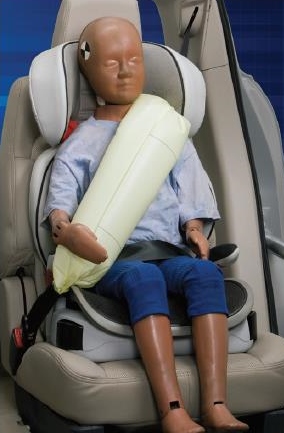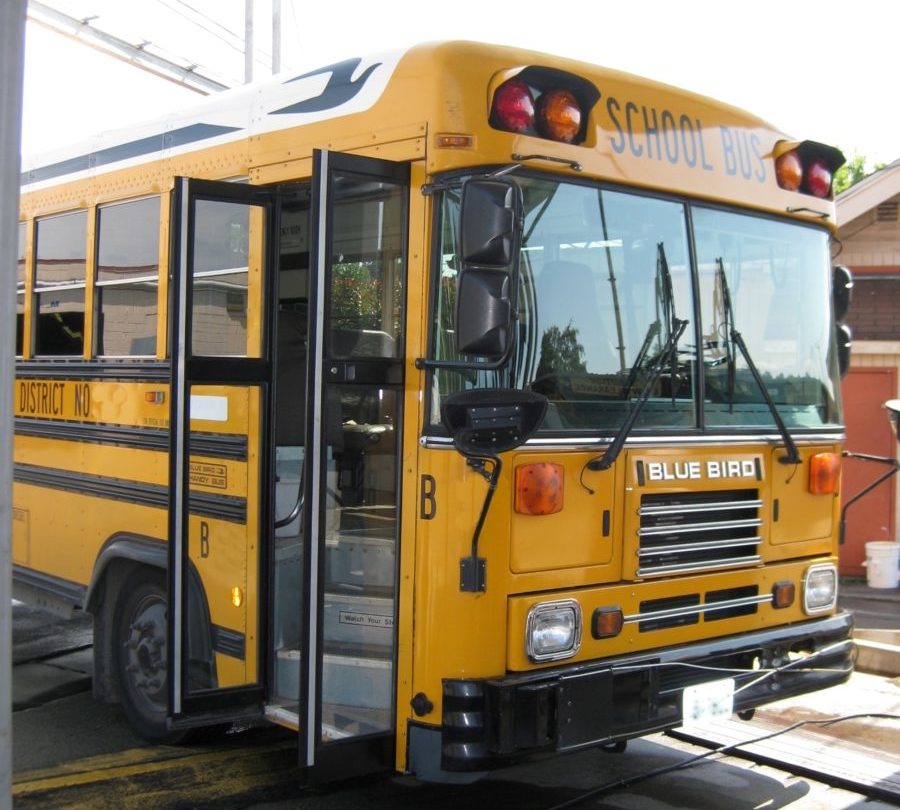In the last two issues, SRN ran articles exploring CR angle situations of following the “level-to-ground” line and considering issues related to touching the back of the front vehicle seat. During our research, we noted a handful of other interesting angle-related issues worth mentioning.
News
Auto Industry Statement on Air Bags in Rear Seating Positions
Safe Ride News asked the Global Automakers and the Alliance of Automobile Manufacturers (auto industry groups that, between the two, represent the U.S. divisions of every major vehicle brand) about the safety of children seated near side air bags in the rear seating area, including torso air bags. The following is a joint statement from these organizations:
Read More from “Auto Industry Statement on Air Bags in Rear Seating Positions”
Winds Blowing Warm and Cold for Seat Belts on School Buses
Once again, in the heat of August, NHTSA aimed an icy blast at efforts to require lap-shoulder belts on all school buses. A petition submitted by Safe Ride News Publications and others in January, 2010 (SRN January/February 2010), after a fatal school bus crash in Connecticut, was denied by NHTSA on August 25, 2011. The agency said, “We have not found a safety problem supporting a federal requirement for lap-shoulder belts on large school buses, which are already safe.”
Read More from “Winds Blowing Warm and Cold for Seat Belts on School Buses”
Consider the Continuum of Occupant Safety
From Car Seat to Driver’s Seat
Dr. Winston is a board-certified practicing pediatrician, biomechanical engineer, and clinical researcher. She is the founder and co-scientific director of The Center for Injury Research and Prevention at The Children’s Hospital of Philadelphia (CHOP).
Since 1997, CPSTs have helped families safely navigate occupant protection for children with measurable results. Motor vehicle crashes are no longer the leading cause of death for children under age 4.* ((Editor’s Note: Statistics on leading causes of child death and injury are available from the Center for Disease Control.)) We have tracked steady increases in appropriate restraint use and a corresponding drop in fatalities—from about 2,000 per year in the 1990s to fewer than 1,100 in 2009 for children less than 16 years old.
Another Angle on Recline Angles:
When the CR Touches the Front Vehicle Seatback
Part one of this series on installation angles for rear-facing CRs, which explored using the level-to-ground line to determine the appropriate angle, ran in the last issue of SRN. This article considers another issue related to rear-facing CR angle: things to consider when the top of the CR contacts the vehicle front seatback. Unlike the issue of understanding how to read the level-to-ground line, which depends solely on the CR manufacturer as the source of guidance, this situation requires considering the advice of both the CR and vehicle manufacturer.
Read More from “Another Angle on Recline Angles:”
Babies on the School Bus
Article expanded from version in SRN September/October 2011
When considering school bus occupants, very young children like preschoolers, toddlers and infants don’t typically come to mind. However, Nancy Netherland, Program and Design Management Specialist for Migrant Seasonal Head Start Training and Technical Assistance (MSHS TTA) reports that, of the approximately 35,000-37,000 children enrolled each year in the Migrant and Seasonal Head Start Program, more than half are under 3 years old, and some are as young as six weeks. Since approximately 67 percent of these young children are transported on school buses, this means that this program alone regularly transports more than 12,000 children each year who are 2 or younger.
Getting Unsafe Car Seats Out of Circulation—Often Cutting the Straps Is Not Enough
Experts agree that the key to the proper disposal of an unsafe CR is to make it unusable, but the definition of unusable and the method of destruction has been left to individual discretion. Owner’s manuals may say to destroy an unsafe CR, but don’t say how to do so. The standardized CPS certification curriculum provides no detailed clarification on this subject.
Read More from “Getting Unsafe Car Seats Out of Circulation—Often Cutting the Straps Is Not Enough”
Exploring Some Angles of the Angle Issue
(This article, part one of a two-part series, looks at how proper rear-facing angle is assessed, especially for older children, and how to use “level to ground” lines on labels. In the next issue, SRN will explore issues related to rear-facing CRs touching front seatbacks.)
After many years of knowing, from research and Swedish crash experience, that keeping children rear facing as long as possible is best, the CPS community now has strong support for this best practice from the American Academy of Pediatrics’ April policy statement on child passenger safety. Armed with that respected organization’s advice to keep kids rear facing until at least age 2, if possible, or even longer if they still fit, the community is doubly blessed by the accessibility of numerous CR models that will hold children up to these higher weight limits. Such models are even available in today’s marketplace across all price levels.
Inflatable Seat Belts Now Available on 2011 Ford Explorers
Can Seat Belts That Inflate Coexist With Child Restraints?
As of March 2011, the touted inflatable seat belt becomes available as a $195 option for rear-seat positions in the 2011 Ford Explorer. Ford has expressed much enthusiasm for this technology, which has been in development for many years. It represents one of few safety improvements in the vehicle industry that is targeted specifically to protect rear seat occupants. Though currently available only in North America, and only on XT and Limited versions of the 2011 Explorer model, the outcome of this initial introduction may lead to more widespread availability in the future.
Read More from “Inflatable Seat Belts Now Available on 2011 Ford Explorers”
Federal Motor Vehicle Safety Standards—School Bus Related
Why No Boosters on Buses?
In October 2008, NHTSA published the “Federal Motor Vehicle Safety Standards; Seating Systems, Occupant Crash Protection, Seat Belt Assembly Anchorages, School Bus Passenger Seating and Crash Protection” final rule, the last components of which will take effect on October 21, 2011. Important among these is the requirement for new buses of 10,000 pounds gross vehicle weight or less to be equipped with lap-shoulder belts, rather than lap-only belts, in all positions.
Having access to lockable, standardized lap-shoulder seat belts on these smaller buses may make installation of conventional CRs easy on most buses so equipped. However, caregivers and advocates are often surprised to learn that best practice is to NOT use a booster on a school bus, even when a lap-shoulder belt is available and the child would normally ride in a booster in the family vehicle.
Read More from “Federal Motor Vehicle Safety Standards—School Bus Related”


